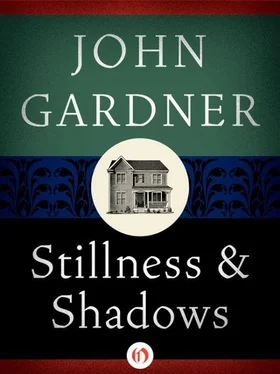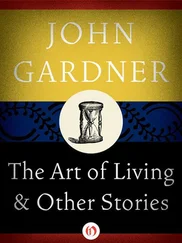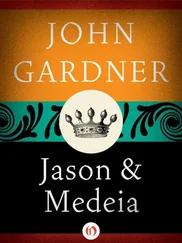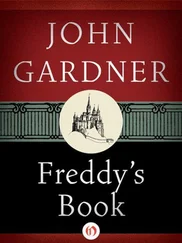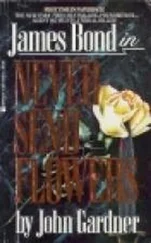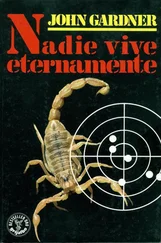Though most of her old Missouri friends were dead, Grandma Davis could count on seeing those who were left, or at least all those within driving distance of Florissant, Missouri, because they came to the meetings of the Cemetery Association.
Long before Joan and Buddy’s time there had been, on an abrupt, sunlit rise in a hollow — a place unreachable now except by an overgrown farm lane — a square, white church with plain glass windows and a bell tower built like a wooden box with a well roof over it. In the yellowed photograph on Joan Orrick’s wall, the church is a clean, well-carpentered building as sturdy and simple as a Shaker chair, so pure of line, so right in its proportions, so decorous — even the hitching posts as strong and direct as good sculptures — that the mind is teased toward wonder at the taste and common sense of the long-dead farmers, blacksmiths, storekeepers, and carpenters who built it. Two of the hitching posts remain, and the tree that in the photograph was a ten-foot-high sapling by the square front door is now a large maple, beginning to split and die. Around where the church was in former times, the high thin burial stones still stand, cocked this way and that by the shiftings of the earth, bearing the names — some of them mere shadows — of the people who were once Grandma Davis’s kinsmen and neighbors: Patterson, Weimer, Jones, Hughes, Thompson, Frazier, Carrico, Davis, Kilpatrick, Burke. One finds there first names the world no longer hears, names Joan and Martin would jestingly consider when trying, years later, to think what to call their children: Lycurgus, Ezekiel, Asanath, Thester. Where the trees at the edge of the cemetery begin — some of them in among the trees, in fact, since the woods have begun to reclaim the land — stand the smaller, simpler headstones of family slaves. Though it’s hard these days to get a casket in, people still bury there. The Cemetery Association pays the taxes and mows the grass, or did until Donald Frazier, who used to do the mowing, had a heart attack, and Joan Orrick arranged for the formation of a chapter of the DAR and got the hollow declared — rightly enough—“historic.”
They would meet, Grandma Davis and her elderly friends, in the centrally located house of one of the most ancient of the members, in the heart of St. Louis. The pictures had oval, carved oak-leaf frames, the chairs were plush and wobbly, two loud clocks ticked, the glasses with ice water were dark, dark green or the deep red of candlelit blood.
“Pretend it’s a roomful of ghosts,” Joan whispered, and giggled behind her hands, sitting with Buddy on the cushioned window seat in the corner of the parlor — behind them, stiff, yellowing lace curtains.
They were receiving, no doubt, the same impression — the familiar faces of Donald and Emmy, John Elmer and Cora (the youngest in the room, but gaunt, transmogrified by the age-blackened wallpaper, the dark, cracked furniture, vases and mirrors, fringed table covers and piano runners), the more ominous faces of Joan’s grandpa and grandma and Buddy’s Grandma Davis, and the faces of strangers, pale and liver-spotted, people in dark, strange-smelling clothes, with canes against their knees, or wooden crutches with rubber end-plugs, people who gestured or lifted their glasses with snow-white trembling hands. But though Joan was amused, pleasantly alarmed (if she let herself be) by the hint of mortality in every gleam of wood or old silver or glass, every dull, fading plane of upholsterer’s cloth — she thought of shining caskets, the gray of old bone — Buddy was inclined to be frightened.
“I don’t want to,” he said.
Though both of them were ten, he was — thanks to his country background, his Grandma Davis, and his tendency to moon-gather — an incredible innocent, which made her laugh and feel, rightly, much older and wiser than he. She told him now of a funeral she’d been to, teasing him, delighting in her power to frighten or soothe him, exactly as she pleased. She whispered in his ear, “The eyes were open. People tried to close them, but they wouldn’t stay closed!” She watched eagerly, waiting for his reaction.
He looked out at the sunlit street, a cat moving slowly toward a tree beside the sidewalk. It would be cool there. Here inside, the room was overheated and smelled strongly of kerosene. He sat perfectly still, wondering if the things she was telling him were so, his expression as solemn as an old man’s. To Joan he looked that moment like her grandpa’s old brown dog, sitting with his head tipped, waiting, sad as could be, for someone to pet him. He turned from the window, threw a worried look around the room, and said seriously, “I hope you never die,” and glanced at her.
She laughed, and saw that her laughter had hurt his feelings. “Everybody dies,” she said, and smiled, making up.
“I know,” he said doubtfully, “and goes to heaven.”
She smiled sadly. “And has to switch to harp.”
Once when they went to Missouri to bring Grandma Davis home, Joan’s parents showed home movies. They were, of course, the only people he knew who had a movie camera. They all sat down in the livingroom in Joan’s father’s house, Grandma Davis’s armchair pulled up close to the screen, because her eyes were bad, Joan’s mother and his parents in dining-room chairs along the side of the room, looking oddly prim, John Elmer and Aunt Cora against the wall behind Grandma Davis’s chair, he and Joan by the back wall with her two brothers and his own brother, Gilbert, four years younger than himself. They were all talking, Aunt Cora leaning over toward Grandma Davis. Joan’s father fussed with the machine, trying to get the square of light to hit the square of the screen — he had the projector set up on the piano bench and was poking magazines under the front, trying to get the right angle.
Joan’s mother reached up for the lightswitch on the light green wall behind her, and Joan’s brother James yelled, “Show the cartoons!”
Her younger brother echoed, “Cartoons! Cartoons! Felix the Cat!”
Buddy glanced over at his brother, who grinned.
“No cartoons!” Joan’s father said, and laughed and blushed as if to say, “You little monkeys!” and started the projector. The lights went off. The projector whirred and clicked, and numbers inside targets showed jerkily on the screen. In burning summer light Joan’s father’s car appeared, halfway on the screen and moving across it. It stopped, and after a long time in which nothing at all happened and no one spoke, the doors opened, and Emmy got out of the driver’s seat, while John Elmer and Cora got out of the back, followed by their son Bobby, and then Joan and her brother James, who’d gotten out the other side, came walking around the front.
“There they are!” John Elmer said. Everybody laughed.
They all waved, looking at the camera, and Joan’s mother slowly put the back of her hand to her face. Suddenly the picture was of someone’s backyard, much darker, and Joan’s youngest brother, with white, white hair, was walking toward the camera, smiling from ear to ear, moving awkwardly, like a calf, his legs in shiny steel braces.
“Look at ’im go!” John Elmer said.
Before they could laugh, Joan was in front of a large building, wearing what looked like a Sunday dress and holding flowers.
“That’s after Joan’s recital,” Emmy said, partly pleased, partly apologetic.
Joan walked toward the camera. The picture suddenly stopped jerking, as if the moment was important; but nothing came of it, she walked on out of the picture without once looking up. Instantly she was back, the same dress, the same flowers, but now she was looking at the camera, smiling.
“That’s a mighty pretty girl,” Buddy’s father said.
Читать дальше
